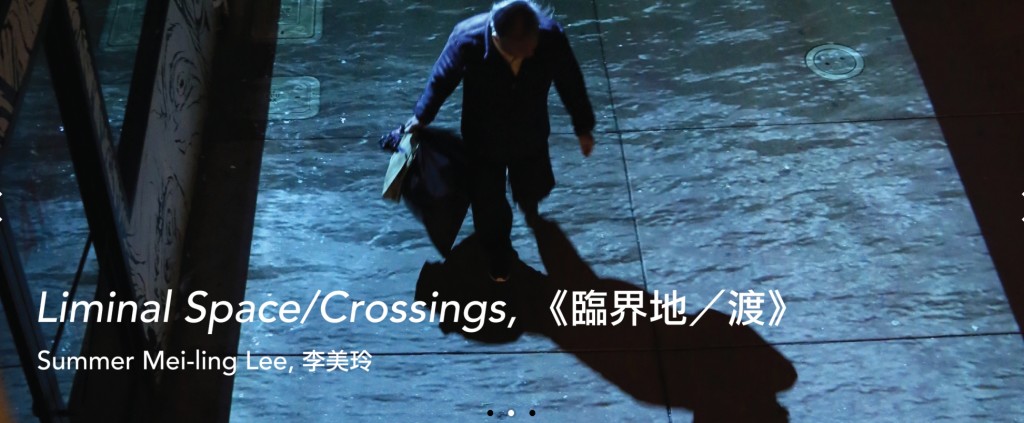
http://www.cccsf.us/liminal-space/
A community-engaged public art project based on Lee’s year-long community-based research on Chinatown’s history, uncovering stories of local residents in dialogue with her relationship to her Chinese immigrant grandmother. “Liminal Space” highlights immigration as an unfurling of processes that begins with a physical transverse of the Pacific Ocean, but is an event that casts reverberations of change for generations to come.
The unveiling also featured a collaborative work with artist Laura Boles Faw titled, “Correspondence” and a performance with Gabriel Case from Creative World Music Ensemble and Erhu player Hexuan Li.
The project is presented and organized by the Chinese Culture Center of San Francisco (CCC) in partnership with the Chinatown Community Development Center funded by Our Town of the National Endowments for the Arts, and was a finalist for the Robert E. Gard Award.
The project is also supported by California Arts Council, Community Challenge Grant Program, San Francisco Arts Commission, Bloomberg Philanthropies, the Andy Warhol Foundation of the Visual Arts, and Grants for the Arts.
http://www.sfweekly.com/culture/knowyourstreetart/know-your-street-art-liminal-spacecrossings/
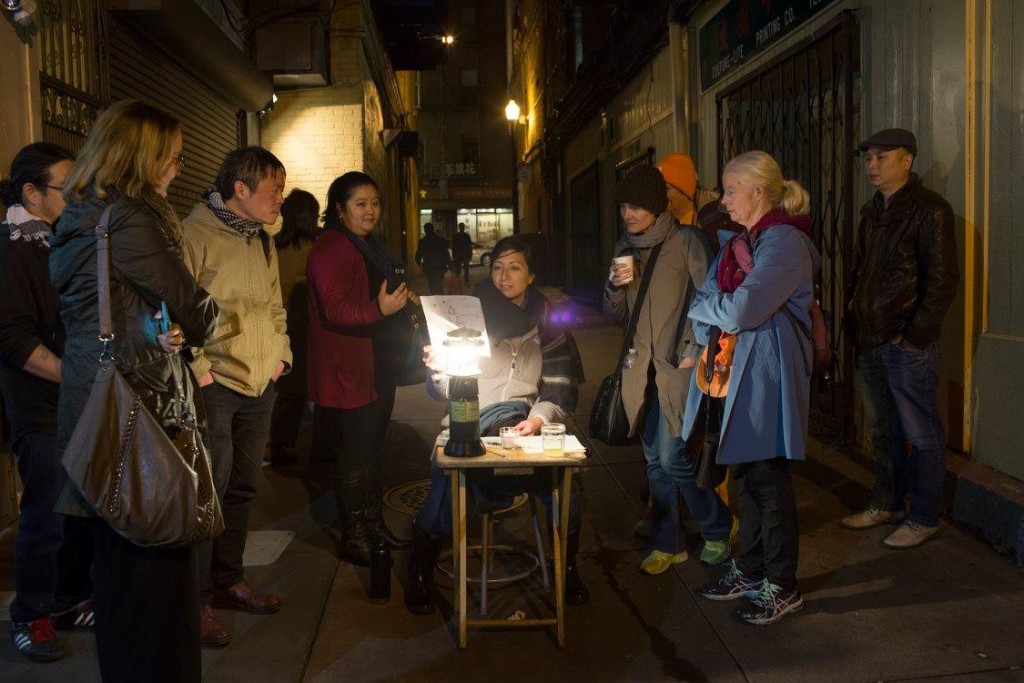
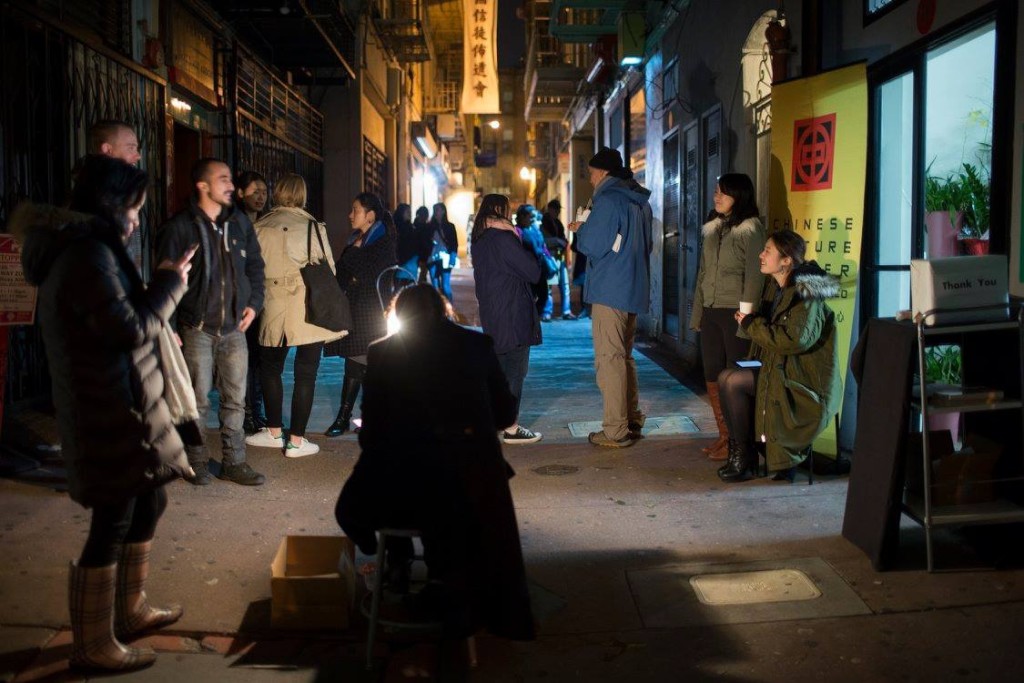
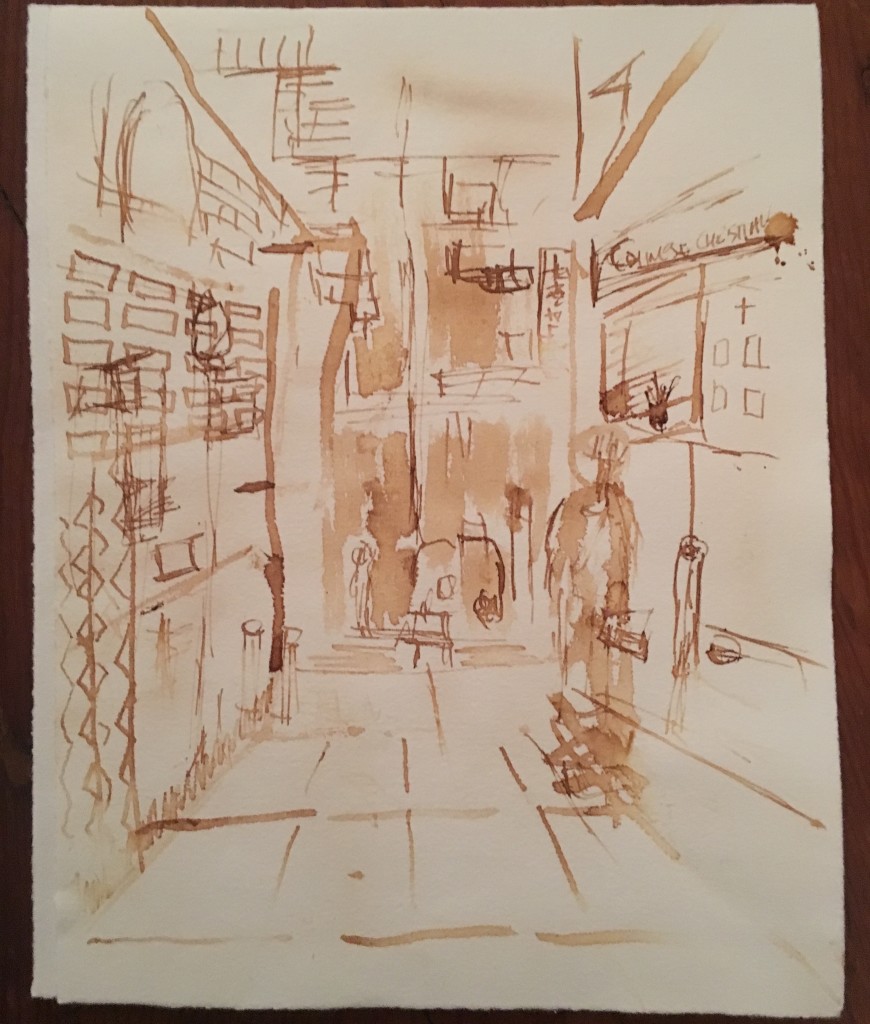
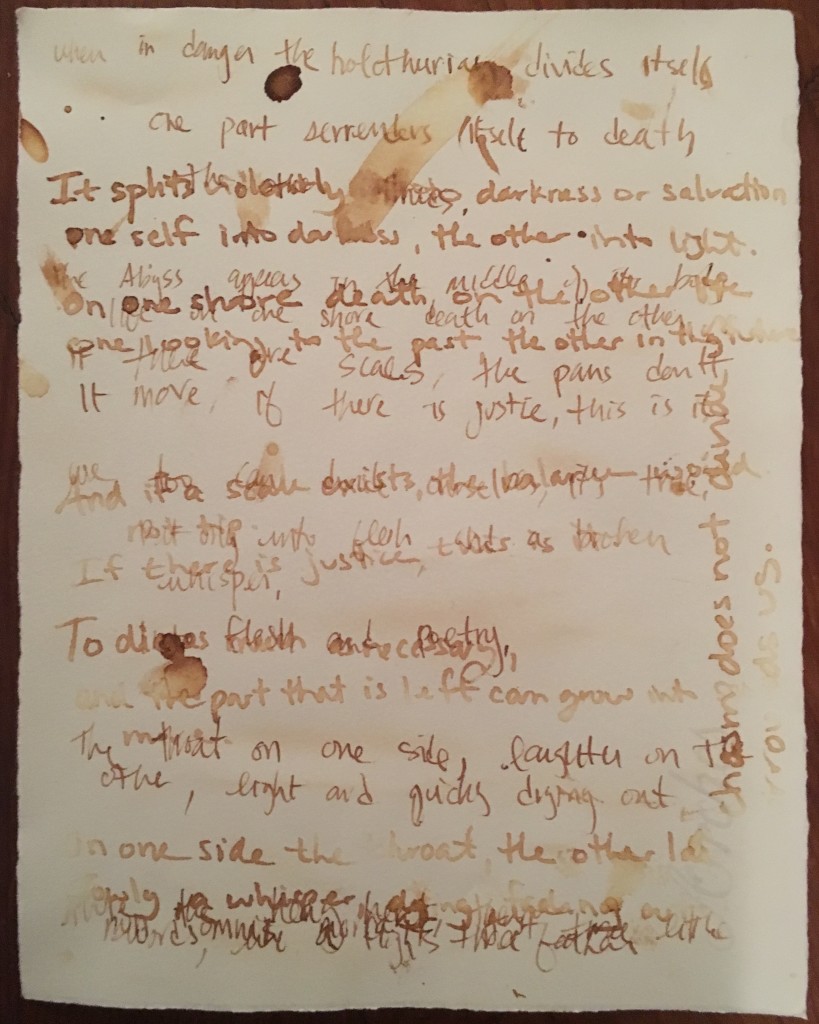
(Correspondence with Laura Boles Faw, 2017. Desks, Lanterns, Invisible Ink and Passers-by in Ross Alley, Chinatown)
During the opening night of Summer Mei Ling Lee’s public art installation “Liminal Space: Crossing,” she and Laura Boles Faw collaborated on a work titled “Correspondence.” The artists inhabited opposite ends of Ross Alley, facing each other through Lee’s projection of an ocean onto the ground. They sat at provisional desks and wrote to each other in the structure of three chapters, each chapter addressing the timeline of a journey across space and time. They wrote to one another using visual and verbal language that is not visible until actively revealed by the receiver. Each artist asked community members who are crossing the alley to carry the correspondence to the other. These messengers traversed the alley, through the ocean installation, and delivered what appears to be blank or clandestine communications. Once received, the recipient heated the paper by flame to reveal the invisible message and responded in turn. Additionally, small blank cards containing invisible stanzas of Szymborska’s Autotomy poem were handed out to bystanders in the Alley, along with instructions on how to illuminate the writing. Using a medium and process historically utilized for conveying secrets, the artists explore a metaphorical communication affected by context and perception and chance — and the space where the written presses up against the unspoken.
